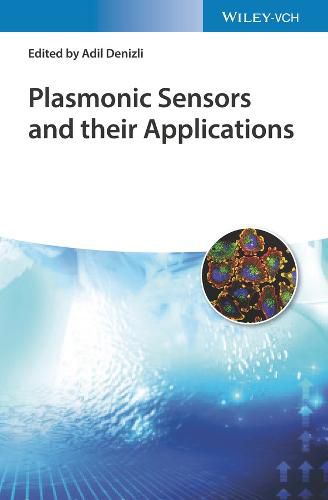Readings Newsletter
Become a Readings Member to make your shopping experience even easier.
Sign in or sign up for free!
You’re not far away from qualifying for FREE standard shipping within Australia
You’ve qualified for FREE standard shipping within Australia
The cart is loading…






Plasmonic Sensors and their Applications A practically-focused reference and guide on the use of plasmonic sensing as a faster and cheaper alternative to conventional sensing platforms
Plasmons, the collective oscillations of electrons occurring at the interface between any two materials, are sensitive to changes in dielectric properties near metal surfaces. Plasmonic sensors enable the real-time study of unique surface properties by monitoring the effect of the material interaction at the sensor surface. Plasmonic sensing techniques offer fast, label-free analysis, and hold advantages over labelling techniques such as ELISA (enzyme-linked immunosorbent assay).
Plasmonic Sensors and their Applications examines the development and use of highly sensitive and selective plasmonic sensing platforms in chemistry, biotechnology, and medicine. Contributions by an international panel of experts provide timely and in-depth coverage of both real-world applications and academic research in the dynamic field. The authors describe advances in nanotechnology, polymer chemistry, and biomedicine, explore new and emerging applications of plasmonic sensing, discuss future trends and potential research directions, and more. This authoritative volume:
Demonstrates why plasmonic sensing is a profitable method for easy and label-free analysis in real-time Covers a variety of applications of plasmonic sensors, such as disease diagnostics, vitamin detection, and detection of chemical and biological warfare agents
Includes a brief introduction to the history and development of plasmonic sensors Provides concise theory and background for every application covered in the text
Plasmonic Sensors and their Applications is an invaluable resource for analytical chemists, biochemists, biotechnologists, protein and surface chemists, and advanced students of biotechnology.
$9.00 standard shipping within Australia
FREE standard shipping within Australia for orders over $100.00
Express & International shipping calculated at checkout
Plasmonic Sensors and their Applications A practically-focused reference and guide on the use of plasmonic sensing as a faster and cheaper alternative to conventional sensing platforms
Plasmons, the collective oscillations of electrons occurring at the interface between any two materials, are sensitive to changes in dielectric properties near metal surfaces. Plasmonic sensors enable the real-time study of unique surface properties by monitoring the effect of the material interaction at the sensor surface. Plasmonic sensing techniques offer fast, label-free analysis, and hold advantages over labelling techniques such as ELISA (enzyme-linked immunosorbent assay).
Plasmonic Sensors and their Applications examines the development and use of highly sensitive and selective plasmonic sensing platforms in chemistry, biotechnology, and medicine. Contributions by an international panel of experts provide timely and in-depth coverage of both real-world applications and academic research in the dynamic field. The authors describe advances in nanotechnology, polymer chemistry, and biomedicine, explore new and emerging applications of plasmonic sensing, discuss future trends and potential research directions, and more. This authoritative volume:
Demonstrates why plasmonic sensing is a profitable method for easy and label-free analysis in real-time Covers a variety of applications of plasmonic sensors, such as disease diagnostics, vitamin detection, and detection of chemical and biological warfare agents
Includes a brief introduction to the history and development of plasmonic sensors Provides concise theory and background for every application covered in the text
Plasmonic Sensors and their Applications is an invaluable resource for analytical chemists, biochemists, biotechnologists, protein and surface chemists, and advanced students of biotechnology.